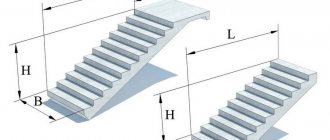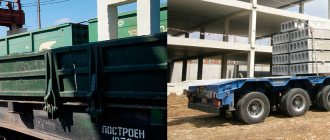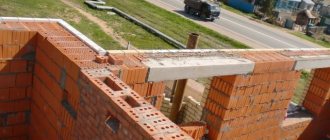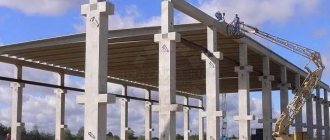GOST 6665-91
INTERSTATE STANDARD
CONCRETE AND REINFORCED CONCRETE EDGE STONES
Specifications
IPC PUBLISHING HOUSE OF STANDARDS Moscow
INTERSTATE STANDARD
| CONCRETE AND REINFORCED CONCRETE EDGE STONES Specifications Concrete and reinforced concrete curbs. Specifications | GOST 6665-91 |
Date of introduction 01/01/92
This standard applies to concrete and reinforced concrete side stones (hereinafter referred to as stones), made from fine-grained (sand) and heavy concrete in accordance with GOST 26633 in the climatic modification UHL in accordance with GOST 15150, intended for separating the roadway of streets and roads from sidewalks, lawns, platforms and etc.
ACCEPTANCE
2.1. Stones are accepted in batches in accordance with GOST 13015.1 and this standard.
2.2. Stones accepted:
- based on the results of periodic tests - in terms of strength, crack resistance, frost resistance, water absorption;
- based on the results of acceptance tests - according to strength indicators (class of concrete in terms of compressive strength, transfer and tempering strength), compliance of reinforcement products with this standard, strength of welded joints, accuracy of geometric parameters, thickness of the protective layer of concrete to the reinforcement, crack opening width, category concrete surface, grade for workability of the concrete mixture, volume of entrained air in concrete mixtures with air-entraining additives.
2.3. Periodic loading tests of prestressed stones to control their strength and crack resistance, as well as to determine the tensile strength of concrete in bending, are carried out before the start of mass production of stones and subsequently - when making design changes to them, changing manufacturing technology and quality of materials in accordance with GOST requirements 13015.1.
In the process of mass production of stones, tests for crack resistance by loading, as well as tensile strength during bending, are carried out at least once every 6 months.
2.4. Concrete stones are tested for frost resistance and water absorption when mastering production, changing the nominal composition of concrete, technology, type and quality of materials, but at least once every 6 months.
2.5. The workability of the concrete mixture is checked at least once per shift.
2.6. The volume of entrained air in concrete mixtures with air-entraining additives is checked at least once per shift.
2.7. Stones in terms of the accuracy of geometric parameters, the thickness of the protective layer of concrete to the reinforcement, the location of the reinforcement, the presence of mounting loops, the category of the concrete surface and the width of the opening of technological cracks should be taken based on the results of random inspection in accordance with Table. for stones made of heavy concrete and in accordance with table. — for stones made of fine-grained concrete, made using the vibration pressing method.
Table 5
PC.
| Batch size | First sample size | Second sample size | Rejection number | |
| for the first sample | for two samples | |||
| Up to 90 | 3 | 3 | 1 | 2 |
| From 91 to 150 | 5 | 5 | 1 | 2 |
| » 151 » 280 | 8 | 8 | 1 | 2 |
| » 281 » 500 | 13 | 13 | 3 | 4 |
| » 501 » 1200 | 20 | 20 | 4 | 5 |
| » 1201 » 3200 | 32 | 32 | 6 | 7 |
| St. 3200 | 50 | 50 | 8 | 9 |
Table 6
PC.
| Batch size | Sample size | Rejection number |
| Up to 1200 | 5 | 2 |
| St. 1200 | 8 | 3 |
A batch of stones not accepted based on the results of sampling must be accepted individually. In this case, the acceptance of stones must be carried out according to the indicators for which the batch was not accepted.
The possibility of using stones that do not meet the criteria for strength and frost resistance is established by the design organization.
2.8. The strength of concrete stones is monitored according to GOST 18105.
2.9. The consumer has the right to carry out a control check of the compliance of the stones specified in the order with the requirements of this standard.
2.10. Quality document - according to GOST 13015.3. The quality document must include the frost resistance grade of the concrete and the water absorption characteristics of the concrete.
At the consumer’s request, the results of control tests of stones for strength and crack resistance according to GOST 8829 are included in the quality document.
Non-standard border sizes
Agree, such large and massive borders are not needed to arrange a personal plot. Or rather, they are very rarely needed. Perhaps the smallest ones are used to separate the car path from the lawn/vegetable garden. Here their strength will be required so that all the beauty does not disperse. And the rest are applicable in the construction of roads.
For garden and driveway paths, such options are more acceptable. They not only look better, but also weigh and cost less
Therefore, manufacturers of the same paving slabs make curbs according to their own dimensions. Such products are called lawn or garden borders. By the way, the standard does not prohibit the production of curb stones of other sizes. Only they must have a strength of at least B22.5 and frost resistance of at least F200. You can come across such a name as a standard size border. This means that this size is common. But not about the fact that it is spelled out in the standard. Here are the sizes of borders for paths in the garden or yard:
- 500*200*80, weight of one piece is about 20 kg;
- 390*190-90 and weighing about 15 kg;
- 500*240*35, weight 9 kg.
There are even some with some kind of pattern.
But this is not for everybody, of course . In general, there are different sizes of borders. Length from 80 cm to 40 cm, height - about 200 mm, width - from 3.5 cm to 10 cm. They can be “standard” gray. Colored ones cost a little more. The colors are usually the same as the paving slabs. Most often it is red, brown, green, sometimes yellow. Please note that the colors are not “pure”, but mixed with cement gray.
Granite curbs are laid with granite tiles
There are also granite curbs. They also come in several sizes:
- length from 70 cm to 2 meters,
- width - from 80 mm to 200 mm,
- height - from 150 mm to 600 mm (150, 200, 300, 400 and 600 mm).
Granite curbs, of course, are beautiful and very durable, but they are very heavy and very expensive.
CONTROL METHODS
3.1. Load testing of stones to control their strength and crack resistance is carried out according to GOST 8829.
The diagram and position of the stone during testing are shown in Fig. and in table. .
R -
control load.
Crap. 1
Table 7
| Brand of stone | Position of the stone during testing | l , mm | A, mm |
| BR300.30.15 | 3000 | 750 | |
| BR300.30.18 | |||
| BR300.45.18 | |||
| BR300.60.20 | |||
| BR600.30.15-A-IV | 6000 | 1500 | |
| BR600.30.18-A-IV | |||
| BR600.45.18-A-IV (AV) | |||
| BR600.60.20-A-IV (AV) | |||
| BU 300.30.29 | 3000 | 750 | |
| BUP300.30.32 | |||
| BUP300.30.29 | |||
| BUP300.30.32 | |||
| BUP600.30.32 | 6000 | 1500 |
The maximum width of crack opening when testing for strength and crack resistance should not exceed 0.2 mm.
Load testing of stones is carried out after the stones reach compressive strength at 28 days of age.
3.2. The compressive and tensile strength of concrete during bending should be determined according to GOST 10180 or GOST 17624, or GOST 22690.
When producing stones using the vibrocompression method, which leads to a change in the composition of concrete, a correction factor is adopted for the strength of concrete of control samples, established experimentally in accordance with the requirements of GOST 10180. In this case, the correction factor should be taken at least 1.
3.3. Frost resistance of concrete is determined according to GOST 10060.0 - GOST 10060.4 or GOST 26134 by saturating concrete stone samples before testing with a 5% aqueous solution of sodium chloride.
In this case, a decrease in the compressive strength of concrete samples is allowed by no more than 5% and a loss of their mass by no more than 3%.
3.4. Water absorption of concrete stones is determined according to GOST 12730.3.
3.5. The workability of the concrete mixture is determined according to GOST 10181.
3.6. The volume of entrained air in a concrete mixture with air-entraining additives is controlled according to GOST 10181.
3.7. Inspection of welded reinforcement products should be carried out in accordance with GOST 10922 and GOST 23858.
3.8. The tension force of the reinforcement, controlled at the end of the tension, is measured according to GOST 22362.
3.9. The dimensions and position of reinforcement products in stone, the thickness of the protective layer of concrete before the reinforcement should be determined according to GOST 17625 or GOST 22904.
In the absence of the necessary instruments, it is possible to determine the specified parameters by cutting grooves and exposing the reinforcement of the stone, followed by sealing the grooves and places where the reinforcement is exposed with fine-grained concrete or the concrete from which the stone is made.
3.10. Dimensions, deviations from straightness and perpendicularity of stones, the width of opening of technological cracks, the dimensions of shells, sagging and edges of concrete should be checked by the methods established by GOST 26433.0 and GOST 26433.1.
The length of curved stones is measured along the upper edge of the convex side, and the deviation of the front surface profile from the nominal curvature is checked with a template.
Installation instructions
We are talking about installing not those large and massive curbs that are used to separate the road, but lawn or garden curbs that are needed to separate the garden path. It doesn’t matter what you plan to pave the path with - tiles, stones or other coating, so that it does not blur, you need limiters. Most often they make a low curb. That is, the top of the path fence is several centimeters higher than the surface of the path and the garden/vegetable garden/flower bed on the other side. In this case, when watering or raining, the soil will not wash onto the path.
These are the recommended installation schemes for curbs with paving slabs
Work order
So, here is the procedure for installing the curb:
- Draw a path on the ground. To do this, you can use a thick plastic bag into which we pour sand. We cut off one corner, we get a thin stream of sand, which is convenient for applying markings. If you need to fix something, that's also not a problem. They erased it and painted it over again.
- We dig a trench. Width - 30-40 centimeters, depth - about 20-30 cm. In general, the depth of the groove for installing a curb depends on the height of the curb. Or rather, the part that you were planning to bury. Under it there should be crushed stone bedding and a layer of concrete.
- We level the bottom of the trench and compact the soil. You probably have a rough idea of how to level it. What to tamp with? If you know how to cook and have a welding machine, take a piece of thick metal, weld a piece of rod or pipe to the middle, and a crossbar-holder on top. Get a normal tamper. It will also be needed when leveling the surface for the path. Don't have a welding machine? Do the same with wood. Not bad either, although the mass is less.
How to install a border/curb for a path with your own hands - Next, pour crushed stone onto the leveled and compacted bottom. The layer is about 10-15 cm. We also level it and tamp it until the mark of your foot is visible on it.
- We take pegs and ropes. We fill the pegs and stretch the rope. The height of the rope is the top of the curb. We check the horizontalness of the thread with a building level. It will serve as a guide when setting the curb height.
- Mix sand-cement mortar grade M300 or higher. We lay it out under the thread in an oblong mound. Place a border on the prepared pillow and align it along the stretched thread. The bottom edge must be recessed into the concrete by at least 5 cm. If such a layer does not work, add concrete on the sides on both sides.
That's all. Then we continue in the same spirit: we laid out cement, installed/leveled a piece of curb. We coat the joints of two fragments of the curb with a layer of cement. We remove its remains immediately after installation and alignment. If it dries, there will be ugly marks that are very difficult to get rid of. If installing one border takes a little time, you can spread the solution on several “borders” at once. It will be faster this way.
Features and subtleties
The most questions usually arise about crushed stone. Not everyone fits it. You can do without crushed stone if the soil is sandy. Then just level the bottom of the trench and you can continue working. But if the soil is clay or loam, black soil, then without gravel backfill in the spring the borders are simply pushed out in different directions. So here gravel gives an increase in durability. Can I use gravel or construction waste rather than crushed stone? It's better than nothing, but not the best option. Especially the brick break. Over time, it will collapse and turn into crumbs, and the curbs will sag. So, it’s better not to, but see for yourself.
We select the dimensions of the borders (height) taking into account the fact that some of them need to be buried
One more thing. Clay, black soil and loams “eat up” gravel amazingly quickly. He drowns in them. If you want a “long-lasting” path, lay geotextiles at the bottom of the trench. Its edges should extend beyond the trench. You just straighten them along the edges. When the curb was installed on the cement, the edges of the geotextile were rolled up and the concrete was covered with film. After a week, you can remove the film and fill the trench with soil. The edges of the geotextile do not need to be unfolded. Then the crushed stone will not wash away.
A few words about how much solution to mix. Depends on how fast you work. If you have little experience in such work, it is better to make a very small batch for the first time - two or three stones. The fact is that if the concrete starts to set, it will have to be thrown away. It will not recover if water is added. No, you can and will get the desired consistency. But the concrete itself will be from the word “nowhere”. It may not gain any strength at all or be very tiny. In some cases, so much so that you can just pick it out with your finger.
TRANSPORTATION AND STORAGE
4.1. Stones are transported by any type of transport in accordance with the requirements of GOST 9288 and “Technical conditions for loading and securing cargo.”
Stones in open cars and on trucks should be transported in container packages in accordance with GOST 20259 or on pallets in accordance with GOST 18343, bandaged with steel tape in accordance with GOST 3560 or wire in accordance with GOST 3282, ensuring rigid fixation and safety of the stones.
4.2. It is prohibited to load stones in bulk and unload them by dropping them.
4.3. Stones should be stored in a finished product warehouse, sorted by grade in stacks or bags up to 2 m high.
4.4. Stones in stacks must be laid on wooden pads with a thickness of at least 30 mm according to TU 400-1-225 or pads made of other materials that ensure the safety of the stones, located vertically one below the other at a distance of 0.2 the length of the stone from the end. The bottom row of stones should be laid on transverse spacers with a width of at least 80 mm.
INFORMATION DATA
1. DEVELOPED by the Moscow Construction Committee and the Glavmosarchitecture under the Moscow City Executive Committee
Ministry of Housing and Communal Services of the RSFSR
DEVELOPERS
V.G.Maidel (topic leader), Ph.D. tech. sciences; E.M. Goldin, Ph.D. tech. sciences; L.V.Gorodetsky, Ph.D. tech. sciences; G.M.Khutortsov, Ph.D. tech. sciences; G.I.Korotkikh; N.K. Kozeeva; L.P. Shchepin; R.M.Koltovskaya; I.N.Nagornyak
2. INTRODUCED by the Moscow Construction Committee under the Moscow City Executive Committee
3. APPROVED AND ENTERED INTO EFFECT by Resolution of the State Construction Committee of the USSR dated 04/03/91 N 13
4. INSTEAD GOST 6665-82
5. REFERENCE REGULATIVE AND TECHNICAL DOCUMENTS
| Designation of the referenced technical document | Item number, application |
| GOST 450-77 | 1.3.15 |
| GOST 3282-74 | 4.1 |
| GOST 3344-83 | 1.3.10 |
| GOST 3560-73 | 4.1 |
| GOST 5781-82 | 1.3.18; 1.3.19; applications 2, 3 |
| GOST 6727-80 | 1.3.18; 4.1; appendix 2 |
| GOST 7473-85 | 1.3.7 |
| GOST 8267-82 | 1.3.10 |
| GOST 8736-85 | 1.3.10 |
| GOST 8829-85 | 2.10; 3.1 |
| GOST 9238-83 | 4.1 |
| GOST 10060-87 | 3.3 |
| GOST 10178-85 | 1.3.9 |
| GOST 10180-90 | 2.4; 3.2 |
| GOST 10181.0-81 | 3.5; 3.6 |
| GOST 10181.1-81 | 3.5 |
| GOST 10181.3-81 | 3.6 |
| GOST 10260-82 | 1.3.10 |
| GOST 10834-76 | Appendix 4 |
| GOST 10884-81 | 1.3.18 |
| GOST 10922-90 | 1.3.21, 3.7 |
| GOST 12730.3-78 | 3.4 |
| GOST 13015.0-83 | 1.3.3, 1.3.26 |
| GOST 13015.1-81 | 2.1, 2.3 |
| GOST 13015.2-81 | 1.4 |
| GOST 13015.3-81 | 2.10 |
| GOST 13015.4-84 | 4.1 |
| GOST 13302-77 | Appendix 4 |
| GOST 14098-85 | 1.3.22 |
| GOST 15150-69 | Introductory part |
| GOST 17624-87 | 3.2 |
| GOST 17625-83 | 3.9 |
| GOST 18105-86 | 1.3.3, 2.8 |
| GOST 18343-74 | 4.1 |
| GOST 20259-80 | 4.1 |
| GOST 22362-77 | 3.8 |
| GOST 22690-88 | 3.2 |
| GOST 22904-78 | 3.9 |
| GOST 23009-78 | 1.2.6 |
| GOST 23279-85 | 1.3.21 |
| GOST 23732-79 | 1.3.16 |
| GOST 23858-79 | 3.7 |
| GOST 24211-80 | 1.3.14 |
| GOST 25592-91 | 1.3.11 |
| GOST 25818-91 | 1.3.11 |
| GOST 26134-84 | 3.3 |
| GOST 26433.0-85 | 3.10 |
| GOST 26433.1-89 | 3.10 |
| GOST 26633-85 | Introductory part, 1.3.10, 1.3.11, 1.3.14, |
| GOST 27006-86 | 1.3.6 |
| GOST 28570-90 | 2.4 |
| OST 13-287-85 | Appendix 4 |
| OST 18-126-73 | Appendix 4 |
| TU 6-02-696-76 | » |
| TU 6-03-7-04-74 | 1.3.15 |
| TU 6-36-0204229-625-90 | Appendix 4 |
| TU 13-0281036-05-89 | » |
| TU 81-05-75-74 | » |
| TU 400-1-225 | 4.4 |
| SNiP 2.01.01-82 | 1.3.3 |
This standard applies to concrete and reinforced concrete side stones (hereinafter referred to as stones), made from fine-grained (sand) and heavy concrete in accordance with GOST 26633 in the climatic modification UHL in accordance with GOST 15150, intended for separating the roadway of streets and roads from sidewalks, lawns, platforms and etc.
Road curb stone price
| product name | dimensions | Vehicle loading rate 20 t, pcs. | Price including VAT and rub. |
| Length, cm | Width, cm | Height, cm | |
| Side road stone BR 100.30.15 | old 265.00 new 235.00 | ||
| Road side stone BR 100.45.18 | old 650.00 new 580.00 | ||
| Side road stone BR 100.30.18 | Curb stone is a product that separates the pedestrian, bicycle or roadway from the lawn and other landscape elements. Its functions are dividing, completing the design of the landscape, and aesthetic. With a high-quality curbstone, the edge remains neat and beautiful for a long time. Asphalt, paving slabs (read about the types of paving slabs), lawns that are not decorated with a stone border gradually crumble, spread to the sides, and their contours lose clarity. Requirements for border elements:
The best material for making curb stones is concrete, which contains cement, sand, and crushed stone. According to purpose, the main types are:
The elements separating the lawn, pedestrian zone from the roadway are subject to significant mechanical loads, and therefore have large dimensions in comparison with those used exclusively in the pedestrian zone. Road stone protects the area bordering the highway. It can have either a straight or curved, arched shape for designing curved sections of the road and safety islands. Marking:
|
Pouring concrete into molds
A high-quality concrete product can be obtained by using a vibrating table. Forms filled with concrete are placed on it, and air is removed from it through vibrations. If this is not available, then compaction of the concrete solution can be achieved manually by tapping the form with a hammer until all air is removed from the solution. If it is necessary to make a more durable reinforced product, then the forms are first half filled with concrete, after which metal rods are placed in them and filled again with the remaining mortar. It is compacted in the same way - by vibration. The concrete poured into the molds must be kept for at least 48 hours, the molds must be removed and the product must be left to gain strength for another 3-4 weeks. Only then can you begin installing the curbs. If you rush and do it earlier, there is a high risk of the product breaking.
When to install a curb stone
The question of when to install a border worries many craftsmen. And usually the opinions of professionals on this issue differ. Some say that the element needs to be installed after digging a trench for the path, others claim that it is better to do everything after the paving slab covering has already been completed. Both options have pros and cons.
Regardless of the chosen option, choosing a border should be done simultaneously with designing the covering (and not after). After all, the element must be combined both with paving slabs and with other elements of landscape design: the roof of the house, fencing, covers on fence posts, facade tiles, gutters, etc.
Installation immediately
This method is suitable for beginners. Thanks to the installation of the border before installing the covering, you can immediately design everything, set the correct geometric proportions of the site, and clearly define the boundaries. Masters advise choosing this option for those who have taken up laying tiles for the first time and have no experience in this matter.
Installation at the end
The big advantage here is that it is possible to avoid sawing individual modules and use the material as rationally as possible, saving on consumption. Often, for laying after paving slabs, a garden border is chosen, which holds the paths well and separates the zones.
To fix the curb, use a mixture of cement and sand prepared in a ratio of 1:3. The mass is used as an underlying layer between the base and the product, and it also fills the side space. Once the installation is complete, pour water over everything and wait until the mixture hardens.
Preface
Preface
The goals, basic principles and basic procedure for carrying out work on interstate standardization are established by GOST 1.0-92 “Interstate standardization system. Basic provisions" and GOST 1.2-2009 "Interstate standardization system. Interstate standards, rules and recommendations for interstate standardization. Rules for development, adoption, application, updating and cancellation" Information about the standard
1 DEVELOPED by the Limited Liability Company "Smolensk-DorNII-Project"
2 INTRODUCED by the Interstate Technical Committee for Standardization MTK 418 “Road Facilities”
3 ADOPTED by the Interstate Council for Standardization, Metrology and Certification (Minutes dated December 5, 2014 N 46) The following voted for adoption:
| Short name of the country according to MK (ISO 3166) 004-97 | Country code according to MK (ISO 3166) 004-97 | Abbreviated name of the national standardization body |
| Armenia | Ministry of Economy of the Republic of Armenia | |
| Belarus | State Standard of the Republic of Belarus | |
| Kazakhstan | Gosstandart of the Republic of Kazakhstan | |
| Kyrgyzstan | Kyrgyzstandard | |
| Russia | Rosstandart | |
| Uzbekistan | Uzstandard |
4 By Order of the Federal Agency for Technical Regulation and Metrology dated August 14, 2015 N 1161-st, the interstate standard GOST 32961-2014 was put into effect as a national standard of the Russian Federation on December 1, 2015.
5 INTRODUCED FOR THE FIRST TIME
6 REPUBLICATION. March 2016 Information about changes to this standard is published in the annual information index “National Standards”, and the text of changes and amendments is published in the monthly information index “National Standards”. In case of revision (replacement) or cancellation of this standard, the corresponding notice will be published in the monthly information index “National Standards”. Relevant information, notifications and texts are also posted in the public information system - on the official website of the Federal Agency for Technical Regulation and Metrology on the Internet











